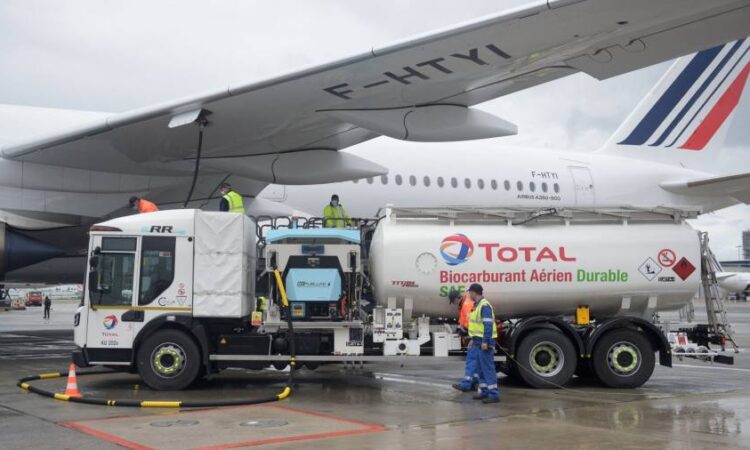
The aviation industry is pushing to have new aircraft powered by jet fuel classified as a green investment under EU rules for sustainable finance, in what climate campaigners have described as a “huge act of greenwashing”.
Environmental groups say the criteria for the sector being considered by the European Commission risk allowing conventionally powered planes to be considered as “best in class” sustainable investments despite their carbon dioxide emissions.
The inclusion of aircraft in the EU’s “taxonomy for sustainable finance”, a framework designed to guide private capital into environmentally friendly activities, is being assessed by the commission.
According to calculations by environmental campaign group Transport & Environment, due to be sent to policymakers on Friday, more than 90 per cent of the order book of Airbus, the world’s biggest aircraft manufacturer as measured by deliveries, could be considered green under criteria drafted by the EU’s advisory body on sustainable finance.
The aviation industry argues investments in new planes should be considered sustainable even if they burn jet fuel because they produce fewer emissions per passenger than older models. The newest designs are up to 20 per cent more fuel efficient than older aircraft, according to industry executives.
Airbus has an order backlog of 7,239 aircraft, of which more than 80 per cent are for its family of A320neo jets, equipped with new engines.
Jo Dardenne, aviation director at T&E, said on Thursday that classing “slightly more efficient planes” as environmentally friendly amounted to a “huge act of greenwashing”.
“These aircraft do reduce emissions — albeit only slightly — but cannot be rubber stamped as sustainable in the taxonomy,” she said. “The taxonomy should channel investments into true green aviation — that is, clean fuels and zero-emission aircraft.”
The debate comes as European policymakers consider how to respond to the US Inflation Reduction Act, a package of incentives to encourage investment into green technologies. Europe’s aerospace trade industry body, the ASD, said on Thursday that including civil aviation in the EU taxonomy was “even more important” when the US was “providing substantial support to its own industry”.
The industry is one of the hardest to decarbonise due to the cost and other limitations of alternative fuels. The sector accounts for about 2 per cent of global Co2 emissions, according to industry experts. Executives argue that sales of more efficient aircraft are needed to help fund investment into zero carbon options, such as electric or hydrogen-fuelled planes.
Airbus told the Financial Times on Thursday that it was “key” that air transport was included in the EU taxonomy and that to “meet the EU’s climate ambition and Paris [climate] agreement targets, the aviation industry needs access to sustainable finance”.
The proposal to include aviation in the framework follows a decision last year to certify certain gas and nuclear projects as green investments under the taxonomy. The move has prompted lawsuits, including challenges from the Austrian government and environmental campaign group Greenpeace.
As a result, the decision on whether to include aviation is being taken at the highest levels in Brussels, according to two people with knowledge of the process.
Ten industry bodies, including lobby groups Airlines for Europe and the International Air Transport Association, wrote to the commission last month warning that a decision not to classify aviation as green would “impede the sector’s decarbonisation efforts and undercut sustainability objectives”.
Philipp Goedeking, a board member at non-profit group Impact on Sustainable Aviation, which promotes the shift to a greener industry, said excluding aviation would send “a strong signal to banks to reconsider their activities in the sector”, putting investment at risk.
Airbus plans to bring a zero emissions aircraft into operation by 2035 and is pushing regulators and energy companies to increase production and use of sustainable aviation fuel, which can be used in conventional aircraft. SAF can reduce carbon emissions by up to 80 per cent but is in short supply and expensive.
T&E said compliance with the taxonomy criteria would depend on airlines’ uptake of SAF and how quickly they upgraded old aircraft.
The commission said it was “currently reflecting about the scope of the activities to be covered” in the taxonomy.






